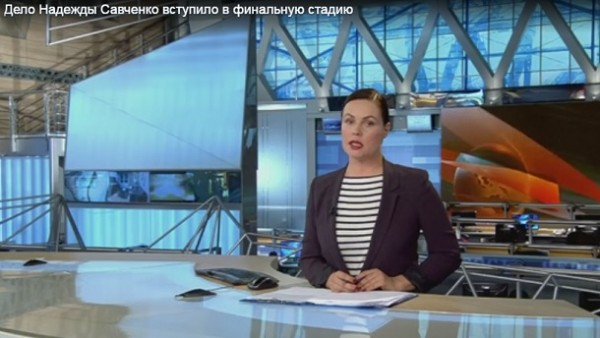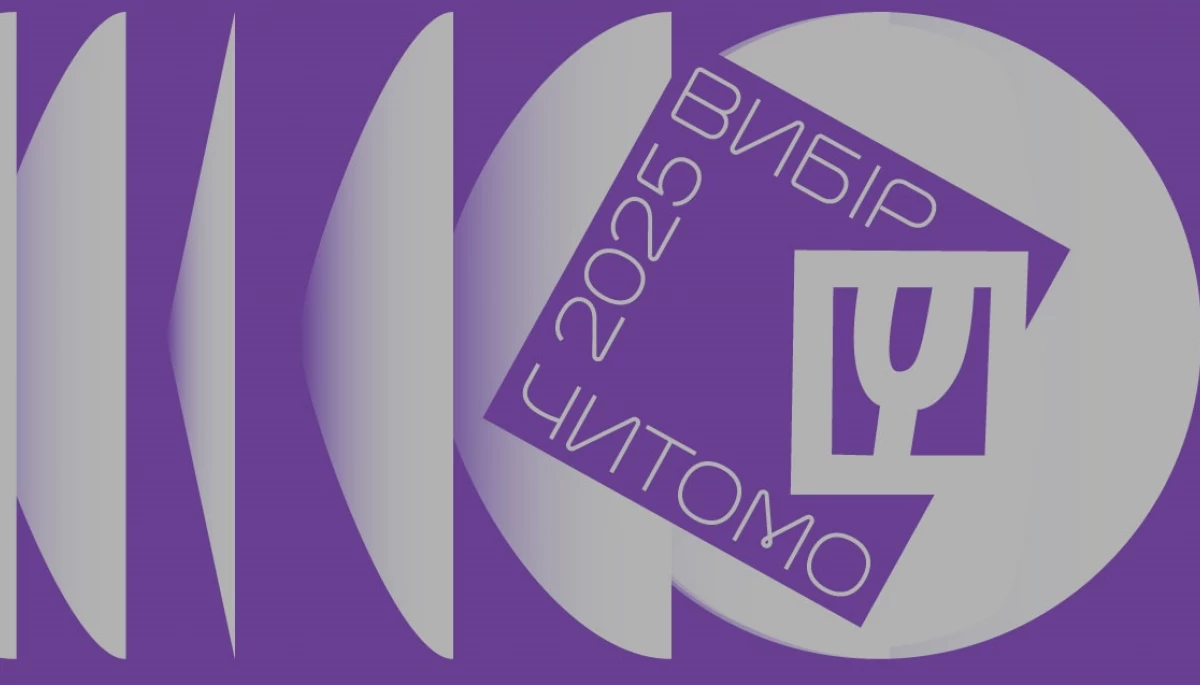
How they destroy Nadiya (Hope). Review of propaganda on Russian TV channels in March – April 2016
How they destroy Nadiya (Hope). Review of propaganda on Russian TV channels in March – April 2016


Increasing military tension in the Donbas and the increase of losses from both sides in March – April was not present on the Russian television. Apparently, there was more important task on the agenda: to turn the final trial of Nadiya Savchenko into the symbol of retaliation to ‘Kyiv regime’, which heralds its imminent collapse under the pressure of the subjective (the growth of fascism) and objective (economic and political crisis) forces.
The covering of the Ukrainian subjects by the Russian central channels (The First Channel, Russia, NTV):
- Stories and mentions on the news directed at strengthening of the negative image of Nadiya Savchenko– 44 (42 of them in March);
- News and stories dedicated to the government crisis in Ukraine– 35 (21 of them in March);
- News and stories about the ‘DPR/LPR’ and fighting in the Donbas– 16;
- Stories about the events in Crimea – 8;
- Stories to mark the anniversary of the tragedy in Odesa on May 2, 2014 – 7;
- Stories about the ‘Minsk process’ and western sanctions – 7.
Even last year, according to independent Russian experts, the ‘Savchenko case’ became a problem for the Kremlin. It is not only because of the resistance of the prisoner and the professionalism of her advocates. In the West, she has become a symbol of treachery and aggression of Vladimir Putin’s policy. They started to consider her release as a necessary concession, as a proof of the Kremlin’s negotiability and its willingness to stop military adventure in Ukraine. But, as Putin’s policy after the Crimea and, especially, after Syria was not to look as ‘rotten’ compromise with the ‘weakening’ West in the eyes of his subjects, it was necessary to destroy any, logical or associative, connection between the general line of the leader and his private decision on Savchenko. Whateveritmaybe.
In other words, they needed to tell the Savchenko story in a new way.And continuation of information blockade in covering the court, ignoring any suggestions for her release did not create preconditions for solving this task.
However, they did not have to go far for a technology.Based on the analysis of airtime, we affirm that in March-April, Russian channels used against Savchenko the same methods they used when covering the beginning of Euromaidan protests in Kyiv. Both then and now, the subject of attack was put into the context of radical, violent actions of anonymous thugs in masks, ultra-nationalistic statements and associations with symbols representing the “evil”.The only difference is that Euromaidan was associated with Nazi and Bandera’s crimes, and Savchenko – with the ‘crimes of Aydar punitive battalion’.
Unfortunately, it must be noted that information special operation against Savchenko was successful, largely due to the events in Ukraine. Thisis, ofcourse, theattackofunidentifiedright-wing groupson the building of the Russian embassy in Ukraine in the night of 6 March. Until that date, during 1-5 March, there were short stories reminding the audience who was Savchenko and what she was accused of on Russian channels.
SinceMarch 6, Russian TV channels have identified anonymous attack on the embassy with theorganized peaceful protest actions in Kyiv and Kharkivto show that it was nationalists and Aydar and Azov fighters, supported by the Ukrainian authorities, who demandedrelease ofSavchenko. Another line of propaganda is imposing opinion to audience that ‘Savchenko case’ is used by the USA against Russia.
The next step on March 9-11 was the dissemination of information with a forged letter ‘from Poroshenko’ by prankers Lexus and Vovan, whose purpose was to show Savchenko’s willingness to begin and end hunger strikes expecting to gain certain benefits or even try to escape to freedom.
Finally, on March 13, DmitriyKiselev assigns ‘Savchenko case’ a new dimension. The sentence to the Ukrainian woman is evidence of the higher justice and the first step towards establishing justice for the victims of ‘punishers’. That is, on the one hand,the audience is being convinced that release of Savchenko is not related to the establishment of peace in the Donbas. On the other hand, they are forced to believe that ‘Savchenko case’ is only the beginning of the persecution of ‘nationalists’ and participants of ‘punitive battalions’ for the ‘crimes’ in the Donbas.
At the final stage of the special operation on March 21-24, by citing the court, prosecutors, investigators, and ‘witnesses’, Russian TV channels used techniques of repetition, hyperbole and ‘talking heads’ in order to secure the conviction that Savchenko was guilty and belonged to extremist organizations. Here are just two of the most illustrative examples:
- Russia channel cites the judge who calls Savchenko the ‘eminence grise of Aydar’ (21.03.16);
- The First Channel cites ‘priest’ Vladimir Maretskiy who talks about the participation of Savchenko in the tortures of prisoners of war and hostages of Aydar (22.03.16).
After that, Savchenko vanished from TV screens. In April, she was mentioned only in connection with possible exchange for Erofeev and Aleksandrov: “In Kyiv, they are called Russian special forces soldiers and accused of terrorism” (NTV, 22.03.2016), as well as in the context of denying the existence of the ‘Savchenko list’, according to which they can impose sanctions on the persons involved in the abduction, investigation and verdict of Nadiya Savchenko and Oleh Sentsov.
As for the fate of two prisoned military servicemen, the Russian TV was interested in them only as clients of the killed lawyer Yuriy Grabovskiy, The fate of two special forces soldiers was interesting to TV channels only as the background of the same known messages:
- A wave of political kills of the supporters and defenders of Russia surged through Ukraine(Russia channel, “Vesti with Dmitriy Kiselev”, 27.03.16);
- Ukrainian authorities do no tprovide protection to opponents (NTV, 27.03.16);
- Yuriy Grabovskiy was killed by political motives because of his involvement in the defense of Aleksandrov; Yuriy Grabovskiy was a personal enemy of Matios, Chief Military Prosecutor of Ukraine (Russia channel, 29.03, 03.04.16);
- activity of Yuriy Grabovskiy could completely destroy the case against the Russians(The First Channel, 17–18.04.16).
Altogether, during March – April, the Russian TV dedicated more time and stories to the growth of extremism and nationalism in Ukraine (in general, not less than 20 stories) than to the events in the Donbas (16 stories). However, in contrast to 2014, now Russian propagandists emphasize on the fact that, under the pressure of economic and political crisis, the power in Ukraine will go into the hands of radicals who will destroy it completely by their policy. The background for such messages in March was the celebration of ‘reunification’ of the Crimea with Russia, and in April – stories dedicated to the anniversary of the tragedy in Odesa.
As for the Donbas, in March – April, bursts of information activity occurred when Russian TV correspondents ‘accidentally’ appeared on the spot of ‘shelling’ from the Ukrainian side:
- “RussianjournalistscameunderfireatthecheckpointnearYasinovatato the north of Donetsk”, Russia channel, 06.04.16, The First Channel, 08.04.16; “Ukrainian militaryfire at journalists and women from mortars”, 08.04.16;
- the deaths of civilians during the shelling of checkpoint “Elenovka” (“There are killed and injured as are su ltofshellingofavillageintheDonbas”: “Accordingtotheintelligencedataofthemilitia, thereistheso-calledBattalionAydar, whosefightersareknownfortheircruelty, includingtowardscivilians. In DPR, they are convinced that this shelling is not accidental – too massive and aimed”, TheFirstChannel, 27.04.16).
As for the leaders of ‘DPR/LPR’, they almost turned into virtual characters. Apparently, to remind of them, they had to organize the SSU’s pseudo attempt on Zakharchenko (stories dated 28-29.04.16 on The First Channel, Russia channel, NTV and Zvezda), or to remind of Plotnitskiy in relation to the famous ‘Savchenko case’ (Vesti, 13.03.16).
However, let us stress again that the events in Ukraine pushed back the news from the Donbas to the periphery of the Russian television. It is worth paying attention to TV news that, in the near future, may become the new points for anti-Ukrainian propaganda. In most cases, Russian propagandists use conflicts widely covered by Inter and 112, without changing either the content of messages or the subjects of information attacks:
- Contacts of Ukrainian and European radicals: “German nationalists met ‘colleagues’ from Azov Battalion in Dortmund” (Russia channel, 04.03.16);
- The Ukrainians do not want to accept refugees(about the conflict in Yahotyn) (Russia channel, 06.03.16);
- The Committee of the Verkhovna Rada supported the cease of diplomatic relations with Russia (The First Channel, 30.03.16);
- From Kherson region to the Crimea Khanate: Poroshenko will give the region to the Tatars and Turks (Russia channel, 06.04.16);
- About unrest at the Administration of President Poroshenkoos tensibly arranged by Automaidan activists(The First Channel, 08.04.16);
- They will start burning books in Ukraine as it was in Hitler’s Germany: “The State Duma Speaker Sergey Naryshkin commented on the news about the ban on the display of Russian films in Ukraine: “It is worth waiting until on the squares of the capital of Ukraine and other cities, they will start burning the banned books. Then it will be the complete similarity with the Third Reich” (Russia channel, 21.04.16).
Not just the mentioned Ukrainian TV channels distinguished themselves by the work on the Kremlin. In some cases, Ukrainian politicians seemed to make statements on purpose to get airtime on Russian television.
Statements and deeds of Ukrainian politicians used by the Russian propaganda:
- Saying of Oleh Liashko about exchange of Nadiya Savchenko for Petro Poroshenko(Russia channel, 10.03.16);
- Fight of Deputy Yakov Bezbakh, who is close to oligarch Viktor Pinchuk, with Tetiana Chornovil, and saying of Mykola Tomenko about “deputies under Koks (Coke) who dictate to the Ukrainian Papuan how to build the country” (Russia channel, 17.03.16);
- Quarrel of Deputies Mustafa Nayem and Dmytro Holubov in the air of 112 channel because of evaluation of Mikheil Saakashvili’s work (The First Channel, 30.03.16);
- Oleh Liashko’s accusations of the President of European Commission: «There will be no EU, no Schengen, NATO will also fail. But Ukraine will be. And what it will be, It depends on Juncker who is already going to visit Russia, butonlyonourselves, Ukrainians” (NTV, Russia channel, 04.04.16);
- Oleh Liashko’s statement: “The RPL’s position is clear: Ukraine begins from a cow» (Russia channel, 08.04.16);
- Mikheil Saakashvili’s statement after the attack on activists who protested against the Mayor of Odesa about the beginning of ‘counter revolution’ and ‘collapse of the state’ (Russia, 26.04.16).
All these citations are just elements of another big information campaign, whose purpose is show the depth of internal, ‘man-made’ crisis in Ukraine. At the same time, Russian media, of course, did not say a word about the role of the Russian Federation in the destabilization. The main villains are the West, especially USA, Ukrainian oligarchs headed by Poroshenko, unscrupulous corrupt politicians like Yatseniuk and his ardent opponent Saakashvili, and ultranationalists. The result of this campaign and its main messages were informed by Vladimir Putin himself.
The First Channel, “News”, 21.00, 17.04.16
«V.Korableva: Ukraine has got a new Prime Minister. As expected, VolodymyrGroisman has become head of the Cabinet. What do you think of the new government?
V.Putin: Nothing. What can I think of the new government? I don’t even know it. I don’t know its composition, I don’t know what priorities it will determine for itself, what it is going to do. Nevertheless, we need stable and prospering Ukraine. We hope very much it will be that way. Though the crisis, which started there because of the known agreement with the EU, is fabricated in some way, it is nonsense. I don’t understand why they did it. And generally, it seems to me that it was an instrument to change the regime, that’s all, no one thought about the people.
Here, they concluded an agreement, it came into force: “It was a civilized choice”. Well, whatcivilizedchoice? Therewereoligarchsinpower, andtheyarenow. Somebody there tries to make some scandal at us on offshores, but there, the first persons of the state are billionaires-entrepreneurs, and they sit in offshores. Well, here he earned several billions, and then he passed the management to a pretty girl, let’s suppose she is a great lawyer - well, did he forget about it? Well, no one will ever believe it. All the same, he will sit there and rule, give instructions what precisely to do.
They zeroed customs tariffs with Europe, and trade with Europe fell by 23 percent, with Russia – by 50 percent. Whowon? Whydidtheydoit? I don't understand. Yes, we introduced retaliatory measures to Ukraine’s joining the EU’s sanctions towards Russia, but we introduced in half a year after they did it. And then my colleagues tell me: “Why did you do it?” I say: “But you imposed sanctions on us as the EU did, and we had not done anything for half a year, waited – perhaps you would remember yourself” – “Well, it does not mean anything to you, but it is sensitive for us because of this and because of that.” Soyoushouldnothavedoneit.
Nevertheless, I hope that the new government will draw conclusions from what has happened lately, will act pragmatically, in the interests of the people, their own people, and not be guided by some phobias or for the sake of some foreign entities”.
The Kremlin seems to hope that its thoughts on the events in Ukraine are not only fully approved inside the country but many Ukrainians may share them. It turns out that after the false hopes, born at Maidan, will die as a result of war, corruption and poverty, Ukraine will finally realize: its salvation is in the alliance with Russia, and not with the West. If it does not work, the Kremlin always has the possibility to renew the war in the Donbas.
Monitoring is conducted by NGO Detector Media with a support of Internews Network.









